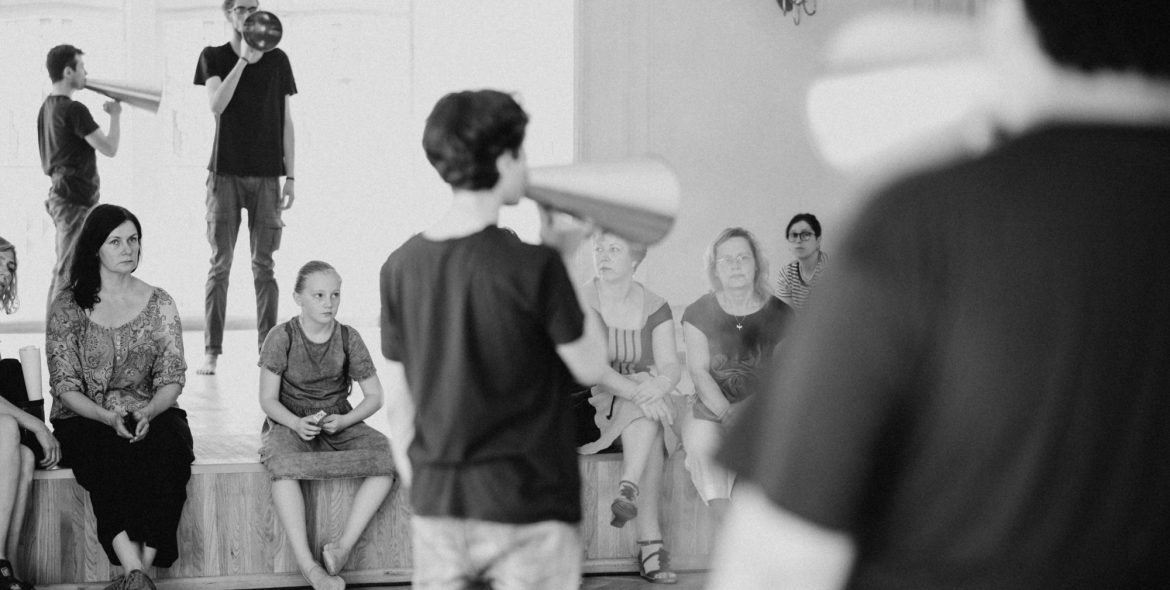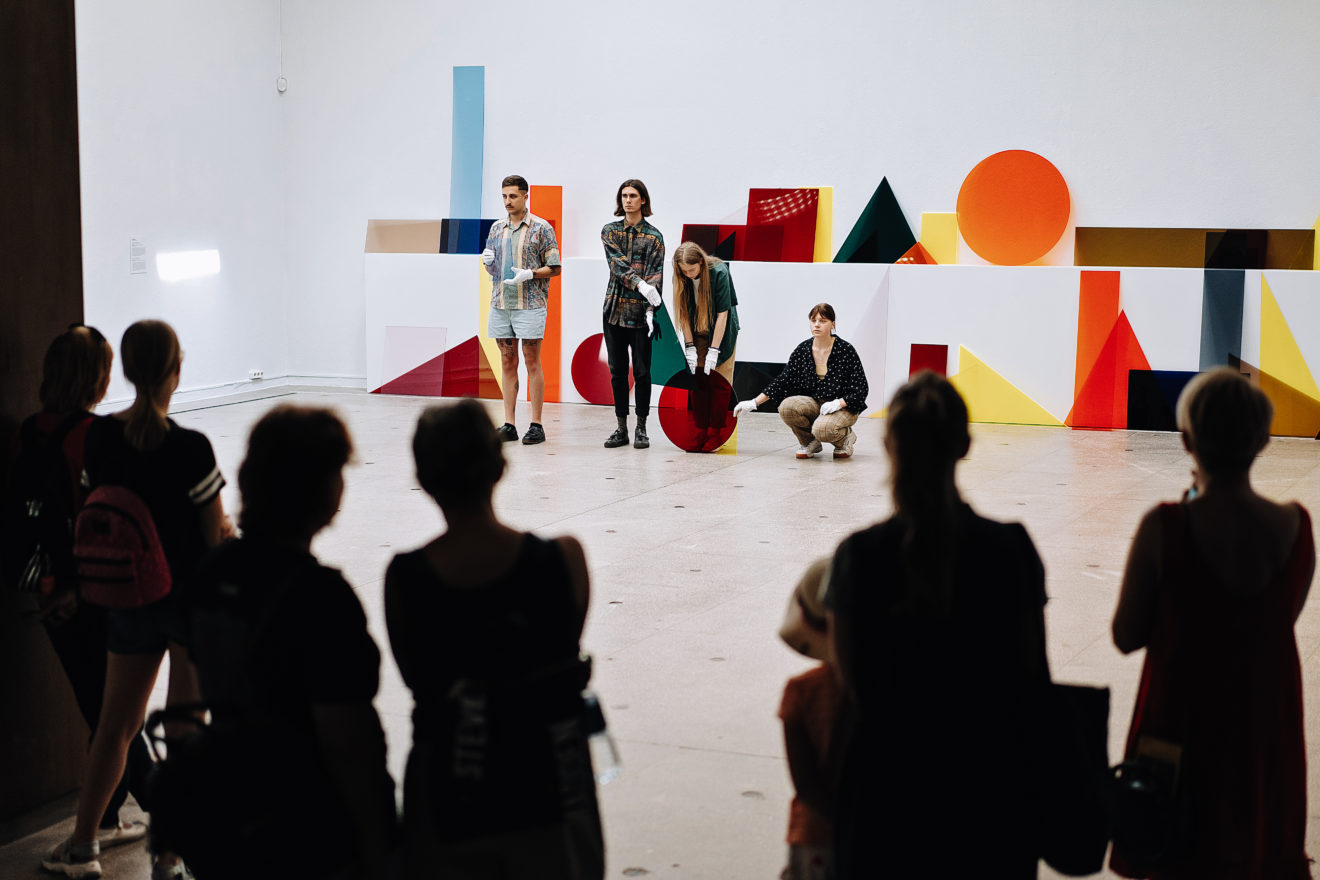In his novel Changing Places, British writer David Lodge presented a humorous take on the careless atmosphere – as well as the troubles – of the intricately connected work of academia and the academics’ free flying between countries, universities and conferences. Much has certainly changed since then: the art scene has attained a similar mobility and once clear borders – particularly those which confined the eastern part of Europe due to geo-political reasons – are gradually dispersing, as are the contrails left by the planes artists and curators use to leap around from exhibition to exhibition and from residency to residency. For a long time, this feeling of limitless mobility was almost a matter of course, but in recent years, it has gradually been disrupted by a number of disturbing symptoms. Freedom of travel, as well as the possibility to freely express oneself through one’s work, is being called into question with rising frequency in the parts of “new Europe” once so intoxicated with freedom. These borders, no longer extant physically or psychologically, have begun appearing like a spectre from the past. We can’t help but remember the seemingly distant past, when these borders were not only barriers, but also labyrinths undergoing frequent transformations. These moved back and forth as part of the hasty rush of military and political developments, radically influencing the fates of millions of people.
Lithuania is among the countries whose population and culture spent almost the entire 20th century wandering through labyrinths of their own identity. And Kaunas, once the temporary capital city, is one of the sites that is still intensely permeated with this memory today. A mix of Hanseatic Gothic-style brick work, lavish Lithuanian Baroque, and Tsarist architecture from the 19th century is completed by modernist architecture of the emancipated interwar republic and the legacy of a long Soviet occupation gradually disappearing behind the signs of current development. This incomparable genius loci could certainly also be perceived as a historical cliché, primarily useful for the development of tourism, but today’s dramatic geo-political developments suggest that it can also be something more. It is partly these characteristics that make Kaunas an ideal spot for a biennial of contemporary art.
The concept of this year’s 12th Kaunas biennale, prepared by a team of five curators (Elisabeth Del Prete, Daniel Milnes, Lýdia Pribišová, Neringa Stoškuté, Alessandra Troncone), is once again bound to the values of local context and memory. Its theme – curtly expressed by the phrase “after leaving, before arriving” – reacts on a more general level to today’s situation, in which not only societies, but also individuals feel a constant, liminal uncertainty. The biennial exhibitions, spread among a number of buildings, including the local art and natural history museums, the bus and train stations and a number of other locations in the city’s public space, attempted – in a steadily developing tradition of “local” biennials – to merge with the local context and everyday life.
In line with the provincial character of the biennial, a few striking older art works which had already garnered international attention in the past were shown – this included Amalia Pica’s performative installations or videos by the legendary video-performer Bas Jan Ader, “discovered” a number of times in preceding decades. But the curatorial principle itself – including works arising from contexts seemingly completely other in the local context – was successful. Confronting a number of specific experiences and problems of today’s world opened a number of unexpected parallels for the spectator, allowing them to create a puzzle that fit surprising well – it didn’t offer any solutions, but it revealed the unexpectedly fine-grained complexity that ties the contemporary world together. The constant tension between centre and periphery omnipresent at these biennials moved beyond the borders of formal artistic expression, particularly towards questions of human identity and intercultural reciprocity and mutuality. In his installation in a very “local” context, placed in the cargo trains at the Kaunas train station, British artist of Zimbabwean origin Tamu Nkiwane provided an intimate insight into his attempts to approach the African roots to which he had lost all connection to in his western home. Many other exhibited works rendered visible the subtle politics which constitute our everyday lives, their non-repeatability acting as threads in the broad fabric defining today’s world. This language of the un-abstracted politics of the everyday in the work of most of the exhibiting artists certainly became the strongest feature of this biennial.

Two artists took part in the biennial within the Magic Carpets residency project – Ana Kovačić (*1986) from Croatia and Sonja Jo (*1992) from Serbia. The personal experience of Sonja Jo in getting to her residency is symptomatic of the situation in Europe. As a citizen of a non-Schengen zone country, the journey was like being lost in the labyrinth of constant border crossings and meticulous checks. For Ana Kovačić, migration became the central theme of the project itself. Her residency, culminating with the works exhibited within the biennial, focused on the migration of bird species and ornithological research in general. The artist’s research, inspired by the heritage of Tadas Ivanauskas, took place in institutions founded by this famous Lithuanian zoologist: the Zoological Museum and the ornithological observation station. A comparison of avian and human migration certainly offers a number of parallels and differences, but here, it was most important as direct confrontation. This confrontation was rendered with the artist’s video using material from the ornithological observation in the hall of the bus station, and also in the dialogue with other artists in dioramas arranged by Kovačić in the Zoological Museum, playing with the museum aesthetic. Her work in the ornithological observatory, on the other hand, had the character of live events including direct audience participation.
Sonja Jo researched the local context too, as part of her project Without Ruins We Cannot See the New World. She recorded the micro-histories of the workers in a local factory, linked to transformations in Lithuanian society. The second part of her project, however, was crucial within the biennial exhibition – an installation in the local art museum within which the spectator was placed into a symbolic (and yet physically intensively felt) position in the ruins of the past, from where they were propagandistically indoctrinated towards an uncertain future using performatives typical of televised news. Through ironic hyperbole, her parable revealed the mechanisms which allow mass media – even today – to hide historical memory and use manipulative methods anew in novel contexts. At a time of a renewed wave of nationalisms and the systematic construction of narratives of fear, alienation and aggression, Sonja Jo’s video acted as an unveiling of the vacuous formalism of these tools of control.
An inner concern for the current social and political situation in Europe is apparent in the work of both artists, as well as in a number of realisations exhibited at the Kaunas Biennial. However, this concern does not lead to explicit and didactic output typical of traditional political art, but rather to an intimate communication with the spectator through the trivialities of the world we live in. These subtle social, physical and environmental stimuli, however, are all the more capable of making present the intensity and complexity of the dangerous everydayness of our current crises. A typical example is the staged performance of Italian artist Francesca Grilli’s The Forgetting of Air, in which the performers and spectators all shared the air in an enclosed and steamy room; air breathed by migrants; air reminding all the participants of the mutual dependency of everyone inhabiting this planet. All those present became participants in the event, which took on strong symbolism in today’s times of ecological crisis.
Viktor Čech is a curator and art critic.




